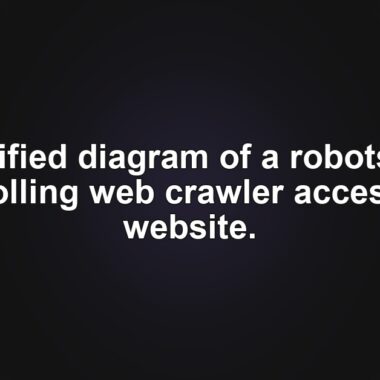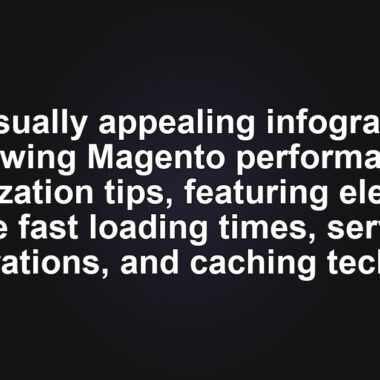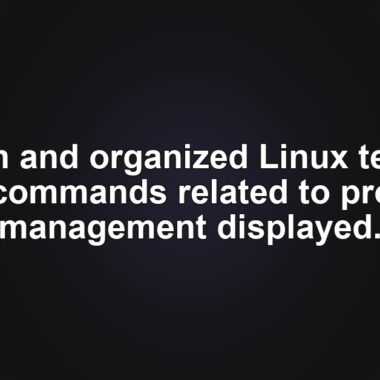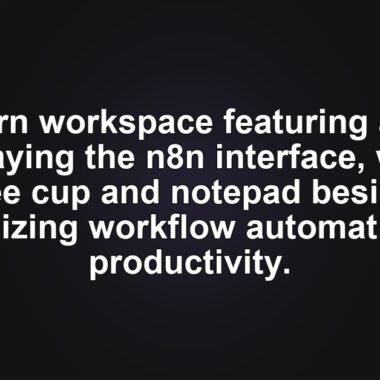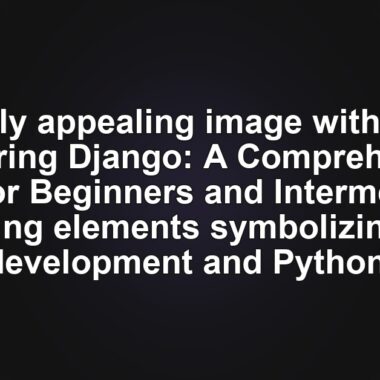How to Install FFmpeg: A Comprehensive Guide for Beginners
FFmpeg is a powerful command-line tool for working with audio and video files, and it’s essential for many multimedia tasks.
Understanding FFmpeg and Its Uses
FFmpeg is an open-source, command-line tool that enables users to handle audio and video files efficiently. It is widely used by developers, content creators, and server administrators for tasks such as format conversion, audio extraction, and video compression. Especially on virtual private servers (VPS), FFmpeg simplifies the process of encoding, streaming, and managing media workflows, making it a valuable tool for resource-intensive tasks like hosting a video streaming server.
Prerequisites for Installing FFmpeg
Before installing FFmpeg, ensure your system meets the following requirements:
- Operating System: While FFmpeg works on older operating systems, it’s recommended to use newer versions like Ubuntu 24.04, Windows 11, or macOS 15 Sequoia for better compatibility and security updates.
- Storage: FFmpeg itself requires around 80 MB, and with dependencies, you’ll need at least 100 MB of free space. Ensure you have enough storage for your files as video and audio processing can take up significant space.
- Terminal Application: For Linux and macOS installations, you’ll need a terminal application. On Windows, you can download FFmpeg directly.
- Administrative Privileges: Admin or sudo privileges are necessary to install FFmpeg. If you’re using Hostinger’s VPS, you have full root access, allowing you to modify your server freely.
How to Install FFmpeg on Linux
To install FFmpeg on Linux, open your terminal and follow these steps:
1. Update the Package Repository
Updating the package repository ensures your system accesses the latest software versions, preventing issues during installation.
- Debian and Ubuntu:
sudo apt update- Fedora and CentOS Stream: Add the RPM Fusion repository to access FFmpeg.
sudo dnf -y install https://download1.rpmfusion.org/free/fedora/rpmfusion-free-release-$(rpm -E %fedora).noarch.rpm
sudo dnf -y install https://download1.rpmfusion.org/nonfree/fedora/rpmfusion-nonfree-release-$(rpm -E %fedora).noarch.rpm
sudo dnf update- Arch Linux:
sudo pacman -Sy2. Install FFmpeg Using a Package Manager
Use the following commands based on your distribution:
- Debian and Ubuntu:
sudo apt install ffmpeg- Fedora and CentOS Stream:
sudo dnf install ffmpeg- Arch Linux:
sudo pacman -S ffmpegThese commands will automatically configure FFmpeg, making it ready for use. Add the -y option for Debian and Fedora or --noconfirm for Arch Linux to skip confirmation during installation.
3. Verify the Installation
To confirm FFmpeg was installed successfully, run:
ffmpeg -versionThis command displays the installed FFmpeg version and its configurations. To update FFmpeg, use the following commands for your distribution:
- Debian and Ubuntu:
sudo apt update && sudo apt upgrade- Fedora and CentOS Stream:
sudo dnf upgrade- Arch Linux:
sudo pacman -SyuRunning these commands monthly ensures FFmpeg and system packages remain up to date. Learn how to compress videos without losing quality to save bandwidth and disk space on your streaming server.
How to Install FFmpeg on Windows
Installing FFmpeg on Windows involves downloading files, organizing them, and updating the PATH variable. Follow these steps:
- Download and install a ZIP utility like 7-Zip if needed.
- Visit the official FFmpeg website and navigate to the Windows builds section.
- Select the Windows builds from gyan.dev to download the
ffmpeg-git-full.7zversion. - Extract the downloaded file using 7-Zip.
- Rename the extracted folder to
FFmpegfor easy reference. - Move the
FFmpegfolder to the root of yourC:drive, creating the pathC:\FFmpeg. - Search for Edit the system environment variables in the Windows search bar and open it.
- In the System Properties window, go to Advanced → Environment Variables…
- Under System Variables, find and select the Path variable, then hit Edit…
- In the Edit Environment Variable window, click New and add this path:
C:\FFmpeg\bin - Click OK to close all dialog boxes.
- Open Command Prompt by typing
cmdin the search bar and pressing Enter.
ffmpegIf successful, FFmpeg will display version information. If issues arise, ensure the path C:\FFmpeg\bin is correctly added, and the ffmpeg.exe file exists in the directory. Restart your computer if necessary.
How to Install FFmpeg on macOS
Install FFmpeg on macOS using Homebrew, a package manager:
- Open the terminal and run:
/bin/bash -c "$(curl -fsSL https://raw.githubusercontent.com/Homebrew/install/HEAD/install.sh)"- Verify Homebrew’s installation:
brew --version- Update Homebrew:
brew update
brew upgrade- Install FFmpeg:
brew install ffmpegFor the latest features, use the --HEAD option:
brew install ffmpeg --HEADConfirm installation with:
ffmpegChoose the regular FFmpeg version for stability or the Git master version for cutting-edge features.
Before you dive into using FFmpeg, consider optimizing your hosting environment. Hostinger offers robust VPS solutions with full root access, allowing you to efficiently manage your server and media processing tasks.
Conclusion
Installing FFmpeg on Linux, Windows, and macOS is straightforward. Whether using package managers like apt or Homebrew or manually downloading files, having FFmpeg installed opens a world of possibilities for multimedia processing. For instance, convert video formats with a simple command:
ffmpeg -i input.mp4 output.aviOr extract audio from a video file:
ffmpeg -i input.mp4 -q:a 0 -map a output.mp3These examples demonstrate FFmpeg’s versatility, which extends to video compression, GIF creation, and audio merging. If you have questions about FFmpeg, feel free to comment below!
How to Install FFmpeg FAQ
What are the system requirements for FFmpeg?
FFmpeg is compatible with Linux, Windows, and macOS. Ensure at least 100 MB of free storage for installation and dependencies. A dual-core CPU and 2 GB of RAM are recommended for reliable performance.
How to check if FFmpeg is installed?
Run the following command in the terminal (Linux and macOS) or command prompt (Windows):
ffmpeg -versionCan I uninstall FFmpeg if I don’t need it anymore?
Yes, uninstall FFmpeg as follows:
- Linux:
sudo apt remove ffmpeg - Windows: Delete the
FFmpegfolder and remove its PATH entry from system variables. - macOS:
brew uninstall ffmpeg
Starter-Pack HTML
FFmpeg is an open-source, command-line tool for working with audio and video files. Many developers, content creators, and server administrators use it to convert formats, extract audio, or compress videos. On virtual private servers (VPS), FFmpeg makes it easy to encode, stream, and manage media workflows. This is useful for resource-heavy tasks, such as hosting a video streaming server. This guide will show you how to install FFmpeg on Linux, Windows, and macOS. By the end, you’ll have it set up on your preferred operating system and ready to handle your multimedia files.
👉 Start your website with Hostinger – get fast, secure hosting here 👈
🔗 Read more from MinimaDesk:
- How to Disable xmlrpc.php in WordPress: A Step-by-Step Guide
- Mastering the WP-Content Directory in WordPress
- The Ultimate Guide to WP-Content: Access, Upload, and Hide Your WordPress Directory
- Mastering WordPress RSS Feeds: A Beginner’s Guide
🎁 Download free premium WordPress tools from our Starter Tools page.



